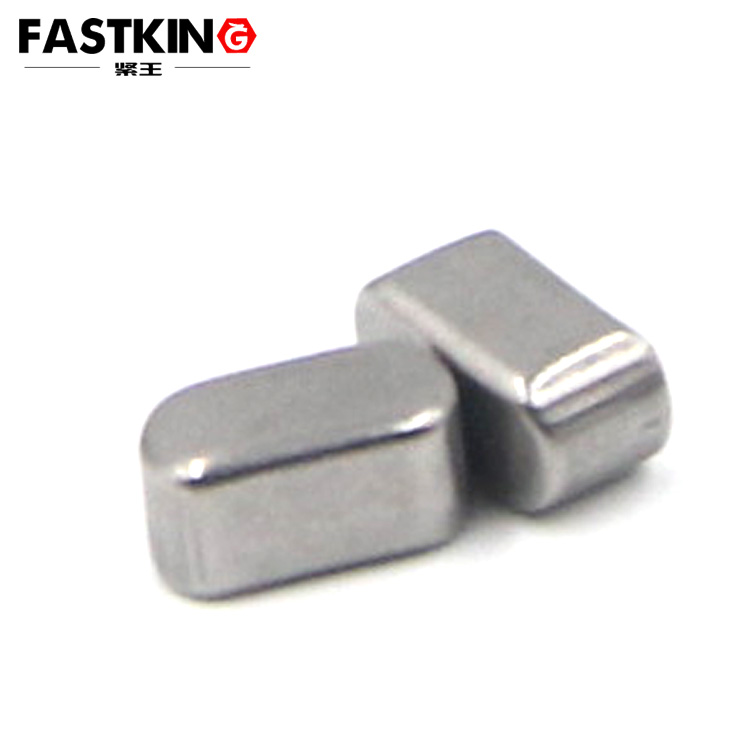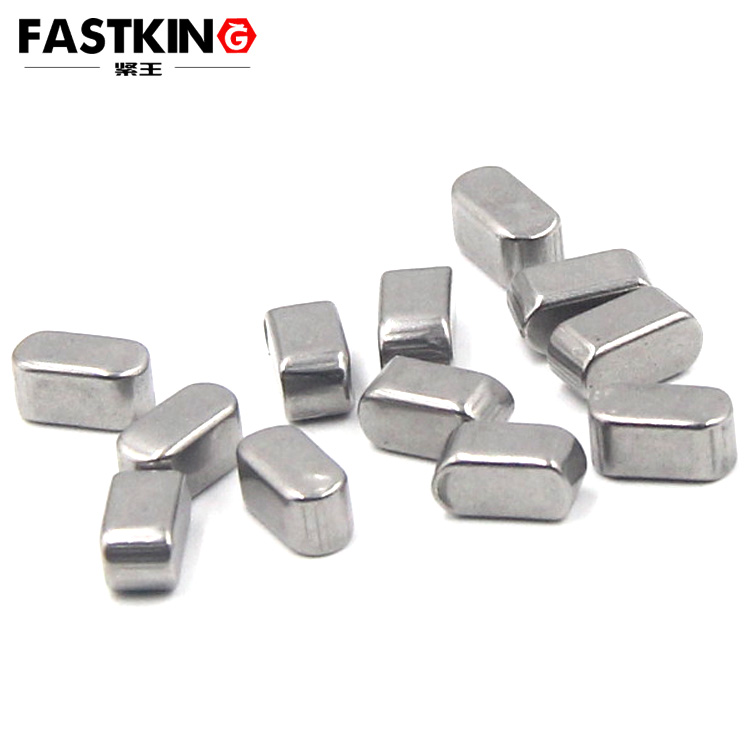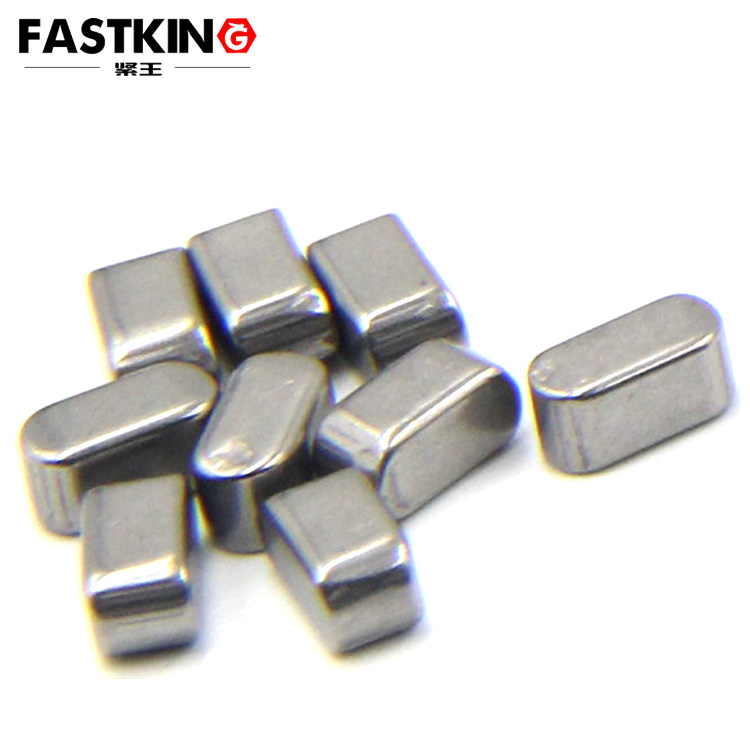Type A flat keys are commonly used connecting elements in mechanical transmission systems, primarily employed to fix shafts and hubs together, ensuring synchronous rotation and torque transmission. Due to their simple structure, ease of installation, and high reliability, they are widely used in various mechanical equipment. This article will provide a detailed introduction to the usage methods and application scenarios of Type A flat keys.

I. Structure and Characteristics of Type A Flat Keys
Type A flat keys are rectangular in cross-section, with semicircular ends and flat sides. Their main features include:
Simple Structure: Type A flat keys are made from a single material, typically high-strength steel, with a straightforward shape that is easy to manufacture and install.
Easy Installation: Installing a Type A flat key only requires machining corresponding keyways on the shaft and hub, and then embedding the flat key.
High Reliability: The tight fit between the flat key and the keyway ensures effective torque transmission and prevents relative movement between the shaft and hub.
II. Usage Methods of Type A Flat Keys
Keyway Machining
Before using a Type A flat key, keyways must be machined on both the shaft and the hub. The dimensions of the keyway should be determined based on the specifications of the flat key and the diameter of the shaft, usually following national standards or industry norms. The machining accuracy of the keyway directly affects the installation effectiveness and lifespan of the flat key, so it is essential to ensure the dimensional accuracy and surface finish of the keyway.
Flat Key Installation
To install a Type A flat key, first place the flat key into the shaft's keyway, ensuring a tight fit. Then, slide the hub onto the shaft, aligning the hub's keyway with the flat key. Finally, gently tap the hub to ensure a tight fit with the shaft. During installation, avoid excessive force to prevent damaging the flat key or keyway.
Inspection and Adjustment
After installation, inspect the fit between the flat key and the keyway to ensure there is no gap and that there is no relative movement between the hub and the shaft. If the fit is not tight, adjust or replace the flat key as necessary.
Lubrication and Maintenance
To extend the lifespan of Type A flat keys, it is recommended to lubricate the flat key and keyway before installation. During use, regularly inspect the flat key for wear and replace severely worn keys promptly to avoid affecting transmission performance.
III. Application Scenarios of Type A Flat Keys
Type A flat keys are widely used in various mechanical transmission systems, especially in scenarios requiring significant torque transmission. Below are some common application scenarios:

Mechanical Equipment
In various mechanical equipment, Type A flat keys are commonly used to connect motor shafts with pulleys, gears, couplings, and other transmission components. For example, in machine tools, pumps, and fans, Type A flat keys effectively transmit motor torque, ensuring the normal operation of the equipment.
Automotive Industry
In the automotive industry, Type A flat keys are widely used in critical components such as engines, transmissions, and drive shafts. For instance, in the connection between the engine's crankshaft and flywheel, Type A flat keys ensure synchronous rotation and transmit the engine's power.
Construction Machinery
In construction machinery, Type A flat keys are often used to connect hydraulic pumps, reducers, and track drive wheels. For example, in excavators and bulldozers, Type A flat keys can withstand significant impact loads, ensuring reliable operation of the equipment.
Marine Industry
In the marine industry, Type A flat keys are commonly used to connect propeller shafts and propellers. Due to the harsh operating environment of ships, Type A flat keys need to have high corrosion resistance and wear resistance to ensure safe navigation.
Power Equipment
In power equipment, Type A flat keys are often used to connect generator shafts and rotors. For example, in hydroelectric power stations, Type A flat keys effectively transmit the torque of the turbine, ensuring stable operation of the generator.
IV. Advantages and Disadvantages of Type A Flat Keys
Advantages
Simple Structure: Type A flat keys have a simple structure, making them easy to manufacture and install.
Low Cost: The manufacturing cost of Type A flat keys is relatively low, making them suitable for large-scale applications.
High Reliability: The tight fit between the flat key and the keyway ensures effective torque transmission and prevents relative movement between the shaft and hub.
Disadvantages

Limited Load Capacity: The load-bearing capacity of Type A flat keys is relatively low, making them unsuitable for transmitting excessive torque.
High Installation Precision Requirements: The installation of Type A flat keys requires high precision; otherwise, improper fit may affect transmission performance.
V. Conclusion
As a simple and reliable mechanical connecting element, Type A flat keys are widely used in various mechanical equipment. Their simple structure, ease of installation, and low cost make them effective in transmitting torque and ensuring synchronous rotation between shafts and hubs. However, due to their limited load capacity and high installation precision requirements, it is essential to design and install them appropriately based on specific working conditions. With proper use and maintenance, Type A flat keys can provide reliable support for the stable operation of mechanical equipment.
